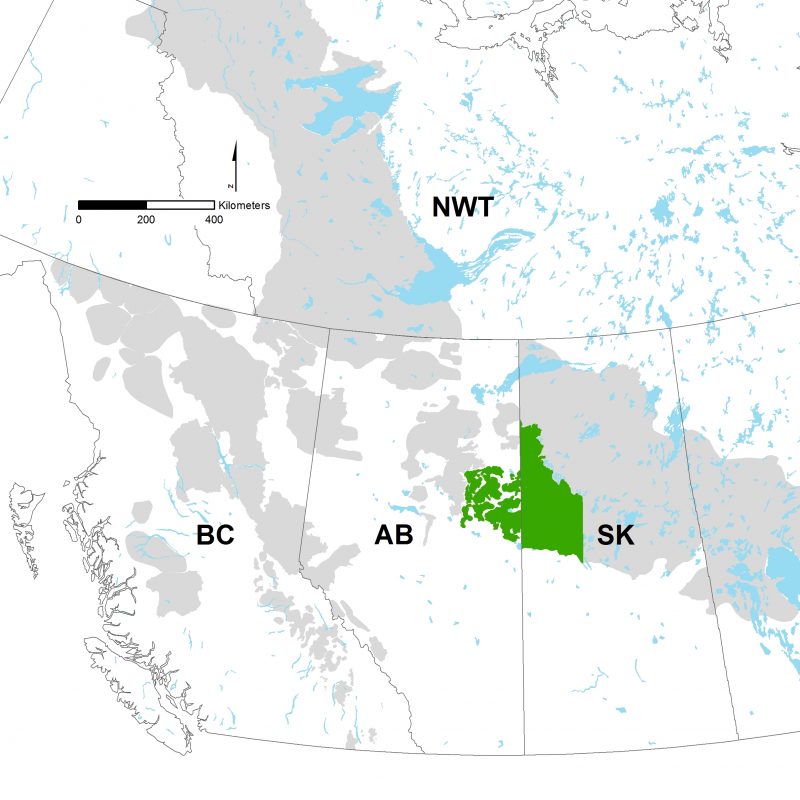The Regional Industry Caribou Collaboration (RICC) is a group of energy and forestry companies who support caribou recovery efforts in the Cold Lake, East Side of the Athabasca River (ESAR) and Saskatchewan boreal plains caribou ranges. The group recognizes that the success of caribou recovery requires coordination and cooperation between each member, because caribou are wide-ranging animals whose annual home ranges cross many industry leases and land-use types. RICC is a leader when it comes to supporting research to understand caribou declines and testing ways to recover populations.
Current members include Alberta-Pacific Forestry Industries, Athabasca Oil Corporation, Canadian Natural Resources Limited, Cenovus, Devon Canada, Imperial, MEG Energy, and Suncor Energy. The CMU plays a scientific advisory role to RICC, and helps to coordinate the groups activities.

Program Goal:
- To participate in collaborative research and active, science-based adaptive management activities within northeastern Alberta’s caribou ranges (Cold Lake, East Side Athabasca River, Red Earth, Richardson, and West Side Athabasca River).
Objectives:
- Coordinate industry restoration of disturbance in priority areas;
- Support and lead scientific research on caribou ecology and on caribou-predator-landscape relationships to identify priority issues and/or priority areas; and
- Support and lead investigative trials on restoration methods, effectiveness and wildlife responses, to assess the effectiveness of treatments and make recommendations for broader implementation.
One example of a RICC collaboration is a bear and wolf telemetry monitoring program that RICC began managing in 2015. Individual members of RICC had initiated multiple collaring programs, but the group recognized the potential of coordinating these activities to work towards a larger goal. The monitoring program tracks wildlife use of linear features and their response to restoration treatments, testing a series of predictions to better understand the responses of predators and prey to linear features and management actions such as habitat restoration.
landscapes in northeastern Alberta
